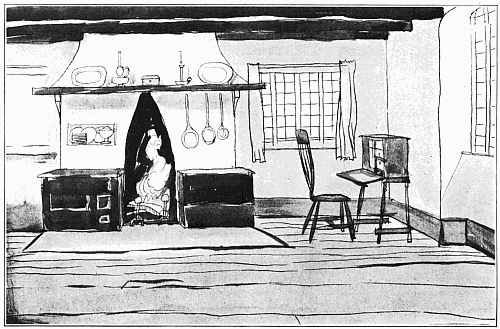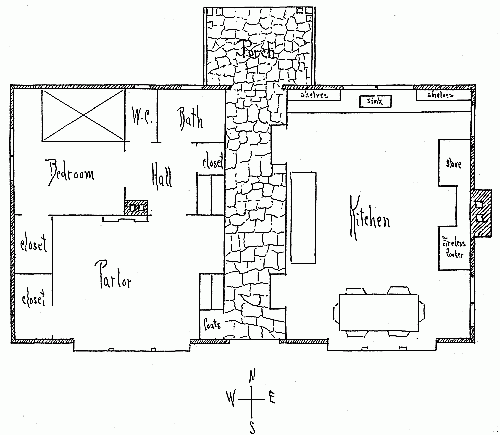
American Cookery article from 1920–
“If some fine day, all housewives awoke to the fact that most of the trouble in the world originates in the kitchen, there would shortly be a little more interest in kitchen problems and not so much distaste for and neglect of this important part of the house.
“Of course, women will cry out that we have never in our lives been so intent on just that one subject, kitchens, as we are today.
“I admit that there is a good deal of talk going on which might lead one to believe that vacuum cleaners and electric-washing machines, etc., are to bring about the millennium for housekeepers; and there is also a good work going forward to make of housework a real profession.
“But, until in the average home there comes the feeling that the kitchen—the room itself—is just as much an expression of the family life and aims and ideals as the living room or any other room, we shall be only beating about the bush in our endeavor to find a remedy for some of our perplexing troubles.
“Nowadays, women who are doing much work out in the big world—the so-called “enfranchised” women—are many of them proving that they find housework no detriment to their careers and some even admit that they enjoy it.
“But so far most of them have standardized their work and systematized it, with the mere idea of doing what they have to do “efficiently” and well, with the least expenditure of time and energy. And they have more than succeeded in proving the “drudgery” plea unfounded.
“Now, however, we need something more. We need to make housework attractive; in other words, to put charm in the kitchen.
“There is one very simple way of doing this, that is to make kitchens good to look at, and inviting as a place to stay and work.
“For the professional, scientifically inclined houseworker, the most beautiful kitchen may be the white porcelain one, with cold, snowy cleanliness suggesting sterilized utensils and carefully measured food calories.
“But to the woman whose cooking and dishwashing are just more or less pleasant incidents in a pleasant round of home and social duties, the kitchen must suggest another kind of beauty—not necessarily a beauty which harbors germs, nor makes the work less conveniently done, but a beauty of kindly associations with furniture and arrangements.
“Who could grow fond of a white-tiled floor or a porcelain sink as they exist in so many modern kitchens! And as for the bulgy and top-heavy cook stoves, badly proportioned refrigerators, and kitchen cabinets—well, we should have to like cooking very well indeed before we could feel any pleasure in the mere presence of these necessary but unnecessarily ugly accompaniments to our work.
We have come to think of cleanliness as not only next to godliness, but as something which takes the place of beauty—is beauty.
“This attitude is laziness on our part, for we need sacrifice nothing to utility and convenience, yet may still contrive our kitchen furniture so that it, also, pleases the senses. With a little conscientious reflection on the subject we may make kitchens which have all the charm of the old, combined with all the convenience of the new; and woman will have found a place to reconcile her old and new selves, the housewife and the suffragist, the mother-by-the-fireside and the participator in public affairs. The family will have found a new-old place of reunion—the kitchen!
“Granted then that our tiny house has a kitchen-with-charm, and an “other room,” the rest of the available space may be divided into the requisite number of bed and living rooms, according to the needs of the family.
“KITCHEN FOR THATCHED-STYLE COTTAGE
“There is only one other very important thing to look out for; that is the matter of closets. There is no rule for the number of closets which will make the tiny house livable, but I should say, the more the merrier. If there is ever question of sacrificing a small room and gaining a large closet, by all means do it, for absolute neatness is the saving grace of small quarters, and storage places are essential, if one does not wish to live in a vortex of yesterday’s and tomorrow’s affairs with no room to concentrate on the present.
“FIRST-FLOOR PLAN OF THATCHED COTTAGE
“Inside and outside the tiny house must conform to one law—elimination of non-essentials; and the person who has a clear idea of his individual needs and has also the strength of will to limit his needs to his circumstances, will find in his tiny house a satisfaction more than compensating for any sacrifices he may have made.”



